If the chimps had their way, they’d eat all day long. Burrito would be unstoppable. Negra would probably forego blankets entirely and just make huge nests out of bread and peanuts so that she would never have to get out of bed again. But overeating is not usually conducive to good health, so for their sake we try to balance these two competing interests as best we can.
Thankfully, there’s a miracle diet food that helps keep chimps happy and healthy: alfalfa. Not just alfalfa, but also bamboo, grape vines, timothy hay, cattails – things that we collectively refer to as “browse”. Chimps love browse, but most browse plants are too fibrous to be digested properly, so they either pass right through or the chimps spit them out after a thorough chewing. Browse makes it possible for chimps to chew to their hearts’ content without eating a lot of calories.
In the summer and fall, many types of browse grow naturally in the chimps’ two-acre enclosure, which allows them to grab a snack anytime they like. Naturally occurring browse is harder to find during the winter, so we make sure to provide Burrito and his family with store-bought treats like alfalfa cubes on a regular basis:
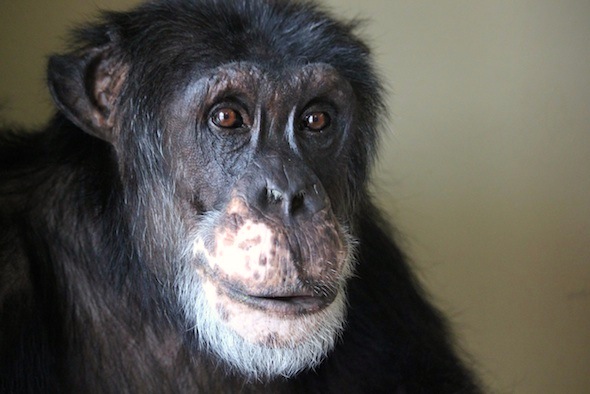
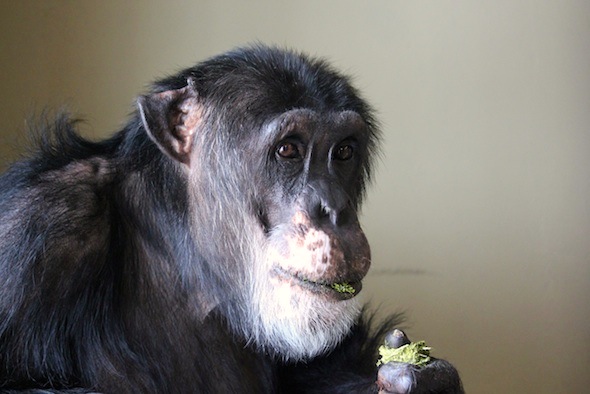
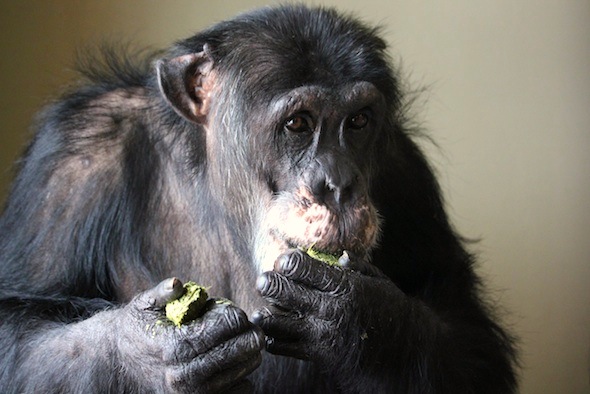
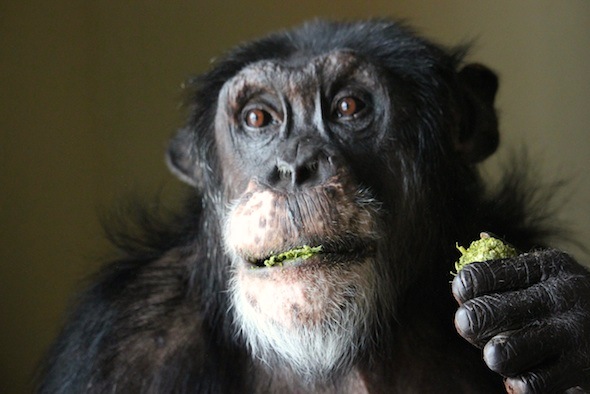
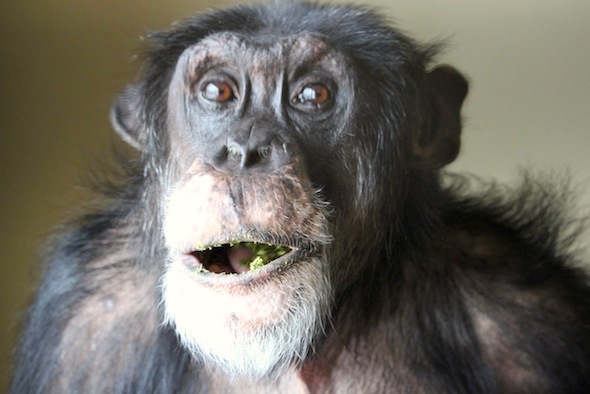





He is just soooooo handsome !!!
There is no such thing as a bad photo of Mr. B in the Photo Booth! I love the way the tiny pieces of alfalfa stick to his lips.
Very interesting post J.B.. Do chimps in the wild do the same thing, source and eat naturally growing browse? Or do they eat a naturally healthy diet partnered with constant exercise to stay in a healthy condition where captive chimps do not have the benefit and luxury of the same physical activities?
Hi Kathleen – Chimps do eat browse in the wild. The exact reasons are unknown…sometimes it is thought to be medicinal, as in the case of the hairy aspilia leaves they use to rid themselves of parasites. Other times, it is thought to aid in the digestion of meat (certain leaves are often paired with meat in the same mouthful). And other times, the browse is probably just another less valuable form of food. One study suggested that chimps eat some types of browse later in the day because the plant’s level of tannins naturally decline and the level of sugars naturally increase throughout the day, thus making them more digestible in the afternoon.
Most free-living chimps don’t face the same risk of obesity because their food is not as highly caloric as ours and they have to work hard to find and procure it. So the role of browse as a tool for weight maintenance is probably limited to captive environments.
Thank you J.B., very interesting. I now recall Jane Goodall mentioning in one of her books how the leaves are eaten with the meat. I wish my brain could hold all the interesting facts that you share with us!
I’v been wondering. Considering that they are omnivorous by nature, do you include any type of meat into their diet?
Hi Adam – We don’t serve any meat to the chimps, but the primate chow that we use to supplement their diet does contain animal products. And once and a while, we will obtain eggs from rescued hens and offer them to the chimps hard boiled. Everyone likes the eggs but Foxie – she doesn’t seem to think of them as food and she peers incessantly at the other chimps, as if thinking “why would you put that stuff in your mouth?”
J.B. – What is the reasoning behind supplementing them the monkey chow as opposed to meat? Resources? Finances?
We had intended to wean them off the chow when they arrived at the sanctuary but they really liked it, so we decided to continue providing them with a little chow each day. We did switch brands, however, because the stuff they were getting in the lab was made by a company that makes nothing but awful laboratory products. And if you left it in a paper bag, the oil from those biscuits would completely soak through the bag. It was disgusting. Anyway, the benefit of continuing with a small amount of chow in their diet is that primate chow is formulated as a complete diet, so it can help provide vitamins and minerals that they could be lacking, in much the same way that many of us rely on fortified cereals, breads, and salts to provide certain vitamins and minerals in our own diets. And since they are already getting animal protein in the chow, we don’t see any reason to add meat to their diet.
Thanks J.B.! Makes sense.
Love these photos!
Great Photos of the handsome Mr. B!